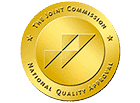Opioid addiction and opioid use disorder are part of a worldwide epidemic. According to the NIH, opioid addiction impacts 3 million Americans and 16 million people across the globe. Not only that but over 500,000 US citizens are physically dependent on heroin alone.
Opioids include illicit drugs such as heroin and fentanyl derivatives, as well as prescription opioids. Prescription painkillers such as oxycodone, codeine, and morphine are prescribed at an alarming rate which has been proven to contribute to the opioid epidemic.

Opioids and Opiates
Opioids and opiates are powerful drugs that act on the body’s opioid receptors, which are found in various areas of the brain and nervous system. These drugs can be used to treat severe pain, but they can also be misused for their euphoric effects. If taken in high doses or mixed with other substances, opioids, and opiates can cause a person to become physically dependent on them, leading to addiction.
Regardless of whether someone is taking prescription opioids or illicit opioids, they are exposed to highly addictive drugs. Due to the addictive nature of opioids, people often develop psychological and physical dependency. In these cases, it is almost always advised to attend rehab for opioid addiction.
Prescription Opioids
Prescription opioids are a powerful and often abused class of drugs. Opioids are often overprescribed which can lead to abuse. Abusing opioids can cause physical and psychological when used incorrectly or in large doses. Not do prescription painkillers have a high potential for abuse, but they can also cause addiction, overdose, and death.
Prescription Opiates
Prescription opiates are a subset of opioids, which are medications used to treat pain. These types of drugs can treat pain when taken correctly and as prescribed. However, these prescription opiates are highly addictive, and prolonged use or misuse can lead to physical and psychological dependence. This means that if an individual stops taking the medication, they may experience withdrawal symptoms.
Prescription opiates include:
- Codeine
- Morphine (Kadian, Avinza)
Semi-synthetic Prescription Opioids
Semi-synthetic prescription opioids are a type of opioid pain reliever that is synthesized or made from natural compounds found in the opium poppy plant. They are used to manage short-term or chronic pain, and they offer the same relief as natural opioids while also having a different chemical structure. This gives semi-synthetic opioids a slightly lower risk of addiction, but they can still be highly addictive if taken for extended periods of time. It is important for users to be aware of the risks associated with taking semi-synthetic opioids and follow their doctor’s instructions when taking them.
Semi-synthetic prescription opioids include:
- Oxycodone (OxyContin, Percocet)
- Hydrocodone (Vicodin, Norco, Lortab)
- Hydromorphone (Dilaudid, Exalgo)
- Oxymorphone (Opana)
Synthetic Prescription Opioids
Synthetic prescription opioids are an engineered form of painkilling medications that are created in a laboratory. These narcotics are often more potent and dangerous than those made from poppy plants. Synthetic prescription opioids are commonly abused, leading to an increase in opioid overdoses, addiction, and death. It’s important to use these medications responsibly and follow the directions of your healthcare professional closely when taking them.
Synthetic prescription opioids include:
- Tramadol (ConZip, Ultram)
- Methadone (Diskets, Methadone Intensol, Methadose)
- Fentanyl (Abstral, Actiq, Duragesic, Durogesic, Effentora, Sublimaze, Subsys)
Illicit Opioids
Illicit opioids are highly dangerous and cause a range of physical and psychological health risks. They cause an intense high followed by a deep depression. Typically, injected, snorted, or smoked, illicit opioids cause an intense high followed by a deep depression. Abuse of illicit opioids can lead to addiction and even death. Since these drugs are illegal, people often abuse illicit opioids in risky situations.
Illicit Opiates
The illicit opiate, heroin, contains the naturally occurring psychoactive compounds found in opium poppy plants. Heroin is highly addictive and has serious side effects on the body. The drug can cause physical and psychological dependence, severe respiratory depression, liver damage, coma, and even death.
Illicit Synthetic Opioids
Illicit synthetic opioids, such as fentanyl and furanyl fentanyl, have become increasingly available on the streets in recent years. These drugs are highly potent and can be deadly even in small doses. It is important to be aware of the risks associated with using these substances and to know how to stay safe when using them.
Illicit synthetic opioids include:
- Acetyl fentanyl
- Butyryl fentanyl
- Beta-hydroxythiofentanyl
- Furanyl fentanyl
- 4-fluoroisobutyryl fentanyl
- Acryl fentanyl
- U-47700
The Difference Between Opioids and Opiates
Opiates and opioids have similar effects but have key differences. Opiate abuse is more common than opioid abuse, and it carries a greater risk of addiction and overdose. Those who abuse illicit opiates are often initially prescribed opioids for pain management or to treat an illness like cancer. Opiates, on the other hand, can be both legally obtained through a prescription and illegally sold as street drugs such as heroin.
Opioids
Opioids are synthetic substances created to produce similar effects to opiates but differ on a molecular level.
- Strong pain-reliever
- Synthetic or semi-synthetic (man-made)
- Created in a lab to replicate the effects of opiates
- Typically refer to pharmaceutical opioid medications
Examples of Opioids: Vicodin©, Percocet©, OxyContin©, Fentanyl, Percodan©, Vicoprofen©, Dilaudid©
Opiates
Opiates are naturally occurring substances derived from the opium-producing poppy plant.
- Strong pain-reliever
- Non-synthetic (natural)
- Derived from opium
- Refer to narcotics, some of which are deemed as having medical-use
Examples of Opiates: Heroin, Morphine, Codeine.
In general, these substances work by attaching to receptors in the brain that are responsible for controlling pain and emotions. When they attach to these receptors, they can produce effects that reduce unwanted physical and psychological symptoms.
When taken under a doctor’s supervision, prescription opioids and opiates can safely and effectively treat medical conditions such as chronic pain or cancer-related pain. In addition to reducing pain, they can also produce feelings of euphoria or relaxation. While opiates and opioids are effective at treating pain, they also carry a risk of dependency and addiction.
When abused, narcotic pain killers can be highly dangerous and have incredibly negative effects. There are a number of risks associated with opioid abuse and addiction including overdose, long-term health problems, mental health issues, and death. It is important to understand the potential risks of opioid use before taking them.
Opioid Abuse
Opioid abuse is overwhelmingly devastating to our country, especially in the midst of the current opioid crisis. The U.S. opioid crisis is a major problem, with 115 Americans dying of opioid overdose each day, according to the National Institute on Drug Abuse (NIDA). Opioid overdose rates have been increasing for years, and in 2015, more than 33,000 Americans died from overdose (NIDA).
In 2021, the Centers for Disease Control and Prevention found that over 50,943 people died of a drug overdose— 81.9% of deaths involved at least one opioid.
In the last year, 2.5 million Americans aged 18-25 have misused opioids, and in 2016, the same number reported misusing an opioid (NIDA). As some of the most potent, habit-forming narcotics, opioids have serious side effects when abused.
If you are unsure whether you or a loved one is struggling with opioid abuse, we have included some warning signs for you to reference in order to get a clearer understanding if you are dealing with opioid addiction or possibly need opioid addiction rehab.
How Do People Use and Abuse Opioids?
Many people take opioid medications for legitimate reasons and in accordance with their doctor’s instructions. In many cases, opioids can be a highly effective way to manage chronic pain or acute episodes of moderate to severe pain. When taken as prescribed, opioid medications are an important part of treating both chronic and acute pain.
However, if not managed properly, these medications can become addictive, leading to issues like physical dependency and an increased risk of overdose. This is why it’s important to make sure that any opioid medication is closely monitored by a physician and taken only as instructed.
How Are Opioids Abused?
Opioids are opiates that can be found in many different forms of medications and illicit substances. With that being said, the most common way to use and abuse opioids are still by taking them as a pill.
Forms of opioids include:
- Pill
- Powder
- Liquid
- Patches
- Lozenges
- Lollipops
There are many forms of opioids and opiates which also means there are several delivery methods.
Methods of using opioids include:
- Orally (swallowing a pill or liquid)
- Injection (intravenous use)
- Inhalation (smoking)
- Intranasally (inhaling or “snorting” through the nose)
For example, there are fentanyl patches that will allow the drug to seep into the pores of your skin and enter the bloodstream. Of course, not all opioids have the ability to enter your bloodstream through superficial means, but transdermal medications like a fentanyl patch have the ability to enter the bloodstream through the skin.
Another drug delivery method is sublingual administration, which is when a drug is made to dissolve into the tissue in your mouth. In this case, the drug goes under a person’s tongue and will seep into their bloodstream that way. Pharmaceuticals like Suboxone are a good example of this delivery method.
How Do People Become Addicted to Opioids?
Opioids are more than capable of making your mind, brain and body trust that opioids are essential for survival. The best way to avoid opioid addiction is to consult with a medical doctor who has prior addiction education before seeking the assistance of a medical specialist. We recommend consulting a doctor who has experience and knowledge in addiction medicine and addiction science because doctors who do not have this knowledge will often prescribe opioids instead of non-narcotic alternatives and major lifestyle changes.
Risk Factors of Opioid Addiction
Opioid addiction can quickly take over a person’s life, causing physical and mental distress, compounded by financial and familial hardship and even death in extreme cases. Knowing the risk factors associated with opioid abuse can help prevent tragedies.
While there are no specific situations that will always result in opioid addiction, there are many risk factors that can increase a person’s chance of developing an addiction to opioids.
Common risk factors of opioid addiction include:
- Genetic predisposition
- Past trauma or abuse
- Underlying mental health disorders
- Personal history of substance abuse
- Family history of substance abuse
- Dysfunctional family dynamic
- Negative peer influence
- Early exposure to drugs or alcohol
- Lack of support from family and friends
- Lack of education about the dangers of opioids
- Receiving prescription opioid medications
- Little to no directions for an opioid prescription
- Ignoring instructions for prescription opioids
- Having access to large amounts of opioids
Although these risk factors can increase someone’s chances of developing opioid use disorder, they do not always lead to addiction. For this reason, many people experience these risk factors and never develop an opioid addiction. Alternatively, many people with opioid addiction do not identify with these risk factors.
However, these risks are potential pathways that increase the likelihood of a person developing an opioid addiction if left unmanaged. For this reason, those who experience these risks can monitor their level of safety against opioid use disorder by understanding the potential warning signs to prevent further problems in the future.
Once you understand how you may be vulnerable to opiate and opioid abuse, dependency, and addiction, you can protect yourself. In the same right, by learning how your personal history and past experiences influence your opioid addiction, you can process painful memories, emotions, and experiences differently.
Signs of Opioid Abuse
Signs of opioid abuse may include:
- Anxiety
- Irritability
- Fatigue
- Rapid cycling moods
- Irregular sleeping patterns
- Binge eating or barely eating
- Excessive talkativeness that is outside the norm
- Misplaced anger and illogical disputes
- Defensive and reactionary to questions
- Self-isolating and avoiding family and friends
- Associating with new groups of people
- Loss of interest in pleasurable activities
- Ignoring obligations and responsibilities
- Less attentive to personal hygiene
- Problems at work, school, or in relationships
- Involvement with the law
- More pain despite lack of progression in the disease
- “Doctor shopping” for opioid prescriptions
- Snorting, smoking, or injecting pills
- Using opioids despite negative effects
- Intense cravings for opioids
- Withdrawal symptoms
Opioid Use Disorder
Opioid use disorder is usually quite severe due to the short length of time in which a person can develop a physical dependence. This is because opioids bind to receptors in the brain, creating an artificial sensation of pleasure or “euphoria”. Opioids also affect basic physiological functioning such as heart rate, sleeping, and breathing. Once a person starts misusing opioids, they often lose control over the cycle of abuse. Unfortunately, this process often leads to the development of an opioid use disorder.
People can be diagnosed with opioid use disorder (OUD) in the same way they would recieve any other medical diagnosis. The National Institute of Health (NIH) defines an opioid use disorder as “the chronic use of opioids that causes clinically significant distress or impairment.” When suffering from an OUD, a person will continue to abuse opioids despite the negative consequences.
Opioid Use Disorder Levels of Severity
Opioid Use Disorder Criteria
The process for being diagnosed with an opioid use disorder is undergoing an assessment. During this assessment, a licensed medical professional will ask a series of questions that outline the criteria for an OUD. The criteria for opioid use disorder are laid out in the Diagnostic and Statistical Manual of Mental Disorders (DSM-5). To receive a diagnosis of OUD, a person must meet two or more of the eleven criteria in a year time period.
Opioid use disorder criteria include:
- Increasing opioid dose and tolerance
- Attempts or wish to cut down on opioid use
- Excessive time spent obtaining or using opioids
- Cravings or a strong desire to use opioids
- Opioids use interferes with obligations
- Continuing opioid use despite life disruption
- Use of opioids in physically dangerous situations
- Reduction or elimination of important activities due to opioid use
- Continuing use despite the physical or psychological side effects
- Need for increased doses of the opioids due to tolerance
- Withdrawal when the opioid dose decreases or stops
Depending on the number of criteria met, an opioid use disorder can be mild, moderate, or severe — regardless of severity, recovery is possible.
Opioid Withdrawal Symptoms
People who are physically dependent on opioids will experience withdrawal symptoms, which can cause an immense amount of discomfort and make it difficult to stop taking them. Withdrawal from opioids is physically and emotionally taxing, and withdrawal symptoms vary in severity. Typically, withdrawal symptoms begin around six hours following the last dose, peak around the 72-hour mark, and last around a week.
Opioid withdrawal symptoms may include:
- Depression
- Anxiety
- Agitation
- Muscle aches
- Restlessness
- Sweating
- Dilated pupils
- Watery eyes
- Runny nose
- Excessive yawning
- Fast heart rate
- Increased blood pressure
- Cold flashes
- Goosebumps
- Nausea
- Vomiting
- Diarrhea
- Abdominal pain
- Tremors
- Insomnia
- Severe cravings
- Protracted withdrawal
It is important to note that individuals who have been using opioids for extended periods of time may experience protracted withdrawal syndrome. Protracted withdrawal, commonly knowns as Post-Acute Withdrawal Syndrome (PAWS), can last several months and include dysphoria, anxiety, insomnia, irritability, and cravings for opioids.
Medically supervised detox programs can help you safely and comfortably manage the physical and psychological impact of opioid addiction. During treatment in an opioid detox program, a team of medical professionals will provide personalized care and support throughout the detoxification process. Quality medical detox programs provide comprehensive medical and mental health services to help you cope with withdrawal symptoms and develop effective coping mechanisms.
Opioid Addiction FAQ
Typically, medications that treat opioid withdrawal include buprenorphine, like Suboxone or Subutex. During detox, these medications assist people in recovery from opioid addiction by treating withdrawal symptoms.
While these FDA-approved medications treat opioid use disorders, it is important to consult with a medical professional when determining which will work best for your situation.
No. There are various side effects that can arise from an improper opioid detox process, however, it is highly unlikely that these side effects will result in death. Most opioid withdrawals will bring intense discomfort, but opioid withdrawal is not life-threatening.
Opioids affect everyone’s body differently, however, taking a consistent amount of opioids can easily cause physical dependence on opioids. This process is different for everyone, so it may take one person weeks of opioid use and another person months in order to become physically dependent.
It is very much possible, and extremely common, for individuals who are not abusing prescription opioids to develop a physical dependence on opioids. Some individuals are just following their doctor’s orders to take their prescribed medication and will develop withdrawal symptoms if they are without their medication. You do not have to misuse or abuse opioids to become physically addicted to them.
Physical dependence is influenced by medical history, volume, and frequency of opioid use, in addition to factors like diet, pre-existing conditions, and a family history of addiction.
Yes, opioid abuse and addiction can have long terms effects. In addition to the many emotional and social side effects of opioid dependence, ongoing opioid abuse can lead to:
- Collapsed veins (IV use)
- Abscesses
- Cellulitis
- Increased risk of infectious diseases (HIV/AIDS and Hepatitis-C)
- increased likelihood of developing pneumonia
- Infection of the heart lining
- Weakened immune system
- Inability to fight off other health issues
- Respiratory complications
- Brain damage
Opioid withdrawals are intensely uncomfortable, which is why we always suggest attending a good rehab for opioid addiction. A proper medical detox will provide you with all the necessary medications to make your detox process as safe, comfortable, and effective as possible. Despite this, it is important to note that withdrawing from opioids is not life-threatening, it is just extremely unpleasant.
Comfort medications are often used to address the symptoms of withdrawal from opioids. These comfort medications are over-the-counter (OTC) medications that treat specific symptoms. For example, if your withdrawal process causes aches and pains, you could take Advil© or Tylenol ©, use a heating pad or take a hot bath. If you are experiencing nausea or diarrhea, you could use something like Pepto-Bismol© or Kaopectate©. If you have restless legs, you could use Restulex© tablets, etc.
The physical symptoms of opioid withdrawal usually last around four to seven days when you undergo a professional medical detox.
Keep in mind that “Post Acute Withdrawal Symptoms” can occur after the detox process. Post Acute Withdrawal Symptoms (PAWS) are reactive physical symptoms brought on by cognitive triggers of opioid use. “PAWS” can last for around three months. These symptoms will diminish with a comprehensive treatment program in addition to therapy for triggers and coping mechanisms.
Opioid Addiction Rehab FAQ
Typically, medications that treat opioid withdrawal include buprenorphine, like Suboxone or Subutex. During detox, these medications assist people in recovery from opioid addiction by treating withdrawal symptoms.
While these FDA-approved medications treat opioid use disorders, it is important to consult with a medical professional when determining which will work best for your situation.
A medical detox program for opioids will range from 4 days or more.
Your length of stay will be determined by various factors, including:
- Your medical history
- Personal history of alcohol abuse
- Volume and frequency of opioids
- Tolerance to opioids
- The severity of your withdrawal symptoms
Attending a reputable rehab for opioid addiction will result in a customized care plan for your medical needs and therapeutic services to address your mental and emotional needs.
At Royal Life Centers, we have a medical detox program that is 4 or 8 days in length. Depending on your unique experience during detox, your personal care team will help to determine your length of stay in detox and treatment.
No, rapid detox programs that claim to cure addiction in a day are not a legitimate form of treatment for opioids. Although the idea of a rapid detox may sound intriguing to some people, there is no medically-endorsed rapid detox process for any addictive substance, including opioids. The detoxification process from opioids is dependent on each individual’s medical history, and drug history.
During the first day or two of detox, your symptoms of withdrawal provide further insight into your treatment needs. As a result, quality opioid addiction rehabs provide 24/7 medical supervision to continuously monitor your progress during a multi-day detox program. Using this information, medical staff can evaluate your withdrawal symptoms and determine your detox plan and an appropriate length of stay in treatment to assist you in achieving a successful recovery.
For this reason, the shortest time period for substance use disorders is a 4-day observational detox program. Any reputable detox program will provide observational detox services in addition to medically-assisted detoxification services that last 8 days or longer.
Those suffering from opioid addiction benefit the most when they attend a full continuum of care in order to properly and effectively recover from opioid addiction. A full continuum of care begins with a medical detox program, progresses to an inpatient level of care, then moves into aftercare and outpatient services.
There is no one-size-fits-all treatment for opioid use disorder. Instead, the best course of action is to participate in a comprehensive treatment program that tailors its treatment services to meet your personal needs and goals for recovery. These programs will help you develop healthy coping mechanisms, mindfulness techniques, life skills, relapse prevention plans, and sober support networks.
Rehab for Opioid Addiction
Withdrawal from opioids can be a difficult journey. Royal Life Centers is here to help make the process smoother and more comfortable. Our team of dedicated professionals provides individualized care that takes into account each guest’s unique needs and challenges. Through our evidence-based detox process, we strive to help guests find holistic healing and lasting recovery.
From medical detox services to psychotherapy and experiential therapies, our team strives to provide the highest quality care for a successful recovery. Our goal is to help guests rediscover their spirit of hope and find joy in life again. With our comprehensive approach to addiction treatment, we provide the tools needed to live a healthier life free from opioid addiction.
Detox From Opioids At Royal Life Centers
At Royal Life Centers, we understand the uniquely challenging aspects of opioid addiction and provide comprehensive care to help you get back on your feet. Our treatment programs are tailored to meet individual needs and feature evidence-based therapies proven to work with those recovering from opioid abuse.
Withdrawal from opioids is physically and emotionally taxing, and withdrawal symptoms vary in severity. Typically, withdrawal symptoms begin around six hours following the last dose, peak around the 72-hour mark, and last around a week. Our goal at Royal Life Centers is to make detoxification from opioids as smooth as possible, which is why our on-site medical staff monitors our guests around-the-clock during our inpatient programs to ensure safety and comfort.
Detox Medications for Opioid Addiction
During treatment for addiction, you may receive medications for opioid use disorder (OUD). These medications help to ease withdrawal symptoms during detoxification. In medication-assisted treatment (MAT) programs, OUD medications act on the brain in different ways to reduce cravings and help people manage withdrawal symptoms, and avoid relapsing.
Comfort medications used during detox include:
- IV fluids for hydration
- Nutritional support (dietary and vitamin supplements)
- Nonsteroidal anti-inflammatory drugs
- Anti-diarrheal medications
- Antiemetics (anti-nausea medicine)
- Nonaddictive pain medications
- Nonaddictive sleep supplements
Throughout detox and residential treatment, we provide 24/7 medical supervision and ongoing monitoring of our guests’ progress. In doing so, we provide a safe and comfortable environment while ensuring that our guests stay on track and continue to make progress in their recovery.
It is important for those suffering from opioid use disorder (OUD) to work with their personal care team to develop an effective treatment plan. Also, medication-assisted treatment (MAT) services are often another important part of opioid addiction treatment. This is because MAT can be beneficial in helping individuals to reduce drug cravings and achieve long-term recovery.
Medication-Assisted Treatment for Opioid Use Disorder
At Royal Life Centers, we provide medication-assisted treatment (MAT) for opioid withdrawal in addition to traditional comfort medications. This approach combines OUD medication with counseling and behavioral therapies to provide a holistic care solution for people suffering from opioid addiction.
These services offer opioid use disorder medications that act on the brain in unique ways to reduce cravings and help people avoid relapsing. In medication-assisted treatment programs, medical professionals provide FDA-approved medications to lessen any withdrawal symptoms and cravings that may otherwise result in relapse.
Opioid use disorder medications used in MAT include:
- Clonidine
- Methadone
- Narcan (naloxone)
- Suboxone (buprenorphine/naloxone)
- Subutex (buprenorphine instant-release)
- Sublocade (buprenorphine extended-release)
- Vivitrol (naltrexone extended-release)
Medications for opioid addiction help reduce the intensity of withdrawal symptoms and provide a sense of relief for those attempting to end opioid dependence. Each type of medication affects the body differently, and our counselors work with individuals to determine which will meet their needs. As MAT treatment minimizes cravings for opioids, our guests are able to focus on other areas of recovery such as therapy and relapse prevention.
For this reason, our MAT services include psychoeducation and counseling to teach guests how to cope with triggers and cravings in their daily lives without reverting back to drug use. This combination of medication, therapy, and other treatment services can help you focus on your recovery from opioid addiction and stay on the path to sobriety.
If you or someone you know is in need of opioid addiction treatment, please contact us today to speak with one of our counselors. We are here to provide the support and guidance necessary for a successful recovery.
Treatment For Co-Occurring Disorders
Effective medication management is an important component in supporting recovery from opioid addiction, particularly by addressing symptoms of co-occurring mental health conditions. Through our dual-diagnosis treatment approach, we provide non-addictive medications during inpatient care and ensure their seamless continuation throughout every stage of recovery. In opioid addiction treatment facilities, detox professionals often administer medications to alleviate anxiety-related symptoms, offering critical mental health support. This comprehensive approach promotes a smoother transition through treatment and lays the foundation for lasting recovery.
Royal Life Centers Treatment For Opioid Addiction
Opioid addiction is a growing epidemic that affects millions of individuals and families across the country. It is a complex issue that requires comprehensive treatment to address both physical and psychological dependence on these powerful drugs. At Royal Life Centers, we understand the struggles and challenges that come with opioid addiction. Our team of experienced professionals is dedicated to providing individualized treatment plans that cater to each person’s unique needs. Our approach to treating opioid addiction focuses on three key components: detoxification, therapy, and aftercare support. This comprehensive approach has been proven effective in helping our clients achieve long-term recovery and live fulfilling lives without the use of opioids.
Get Help For Opioid Abuse
Taking the first step to recovery can be the most challenging yet rewarding decision of your life or for the life of a loved one. Opioid addiction doesn’t have to be a life sentence; there is hope, and help is closer than you might think. By reaching out to us, you’re not just seeking assistance. You’re reclaiming control over your life and embarking on a journey toward health, happiness, and fulfillment.
Don’t let another day go by feeling trapped by addiction. Contact us now to learn more about how our compassionate team can support you or your loved one through personalized treatment plans that address not just the symptoms, but the root causes of addiction.
Looking for a Rehab for Opioid Addiction?





